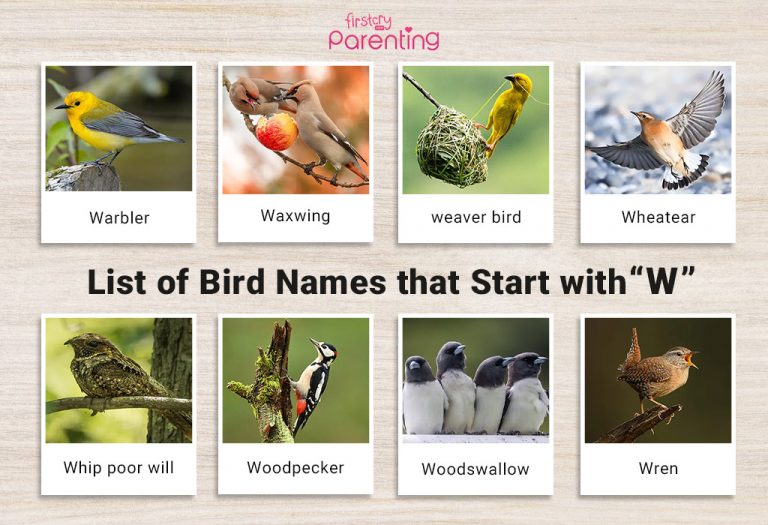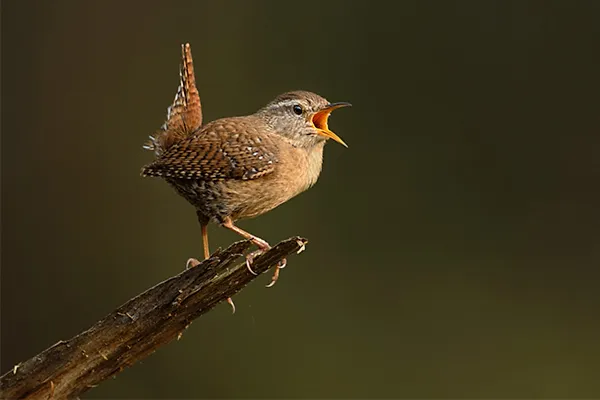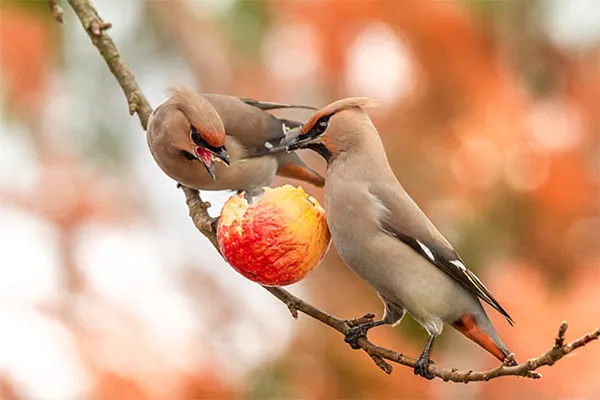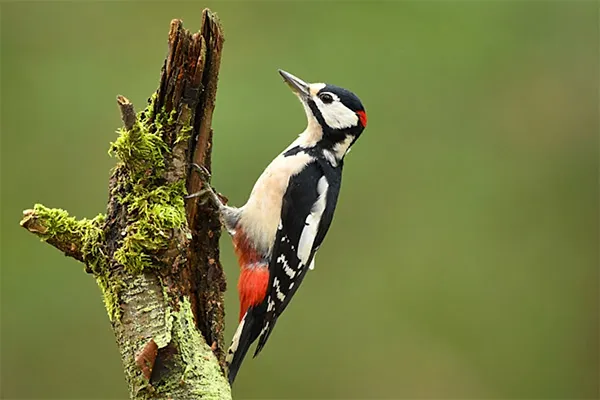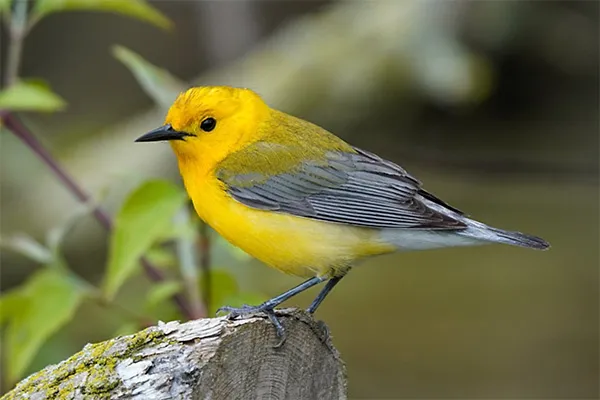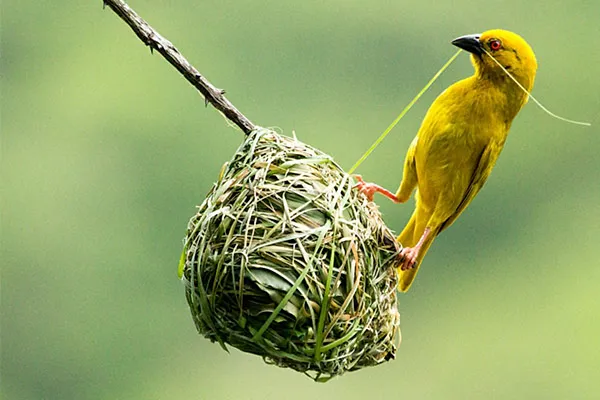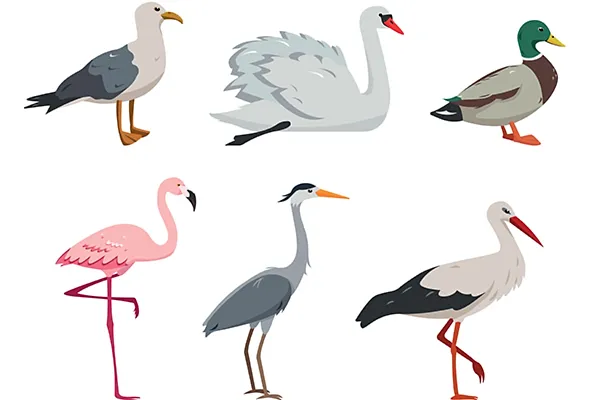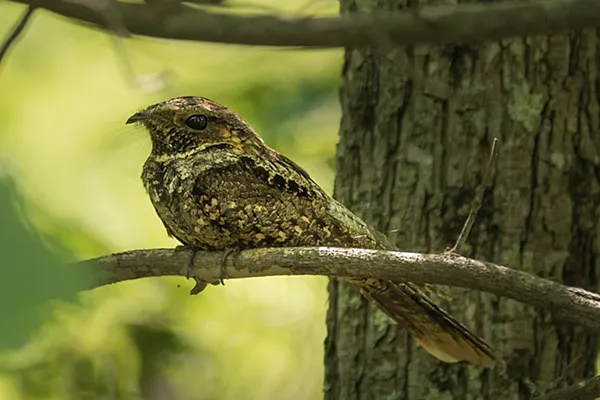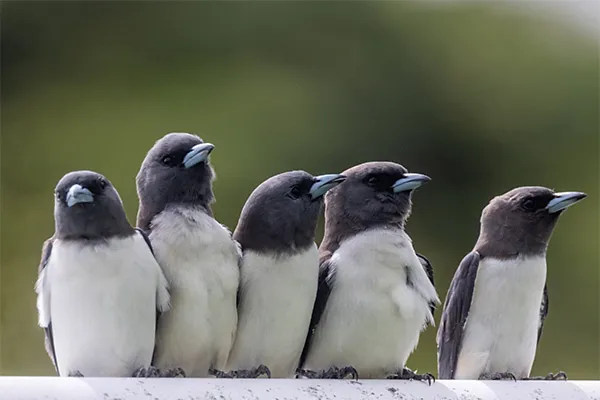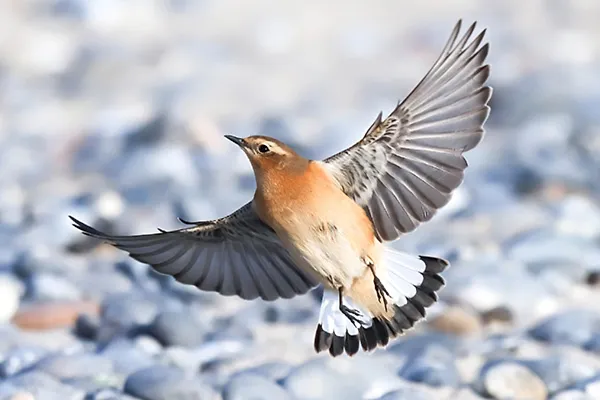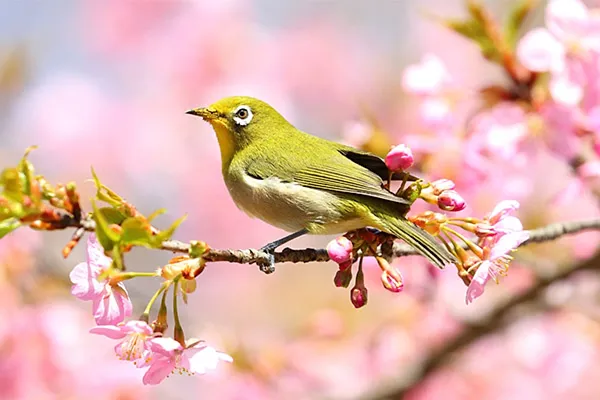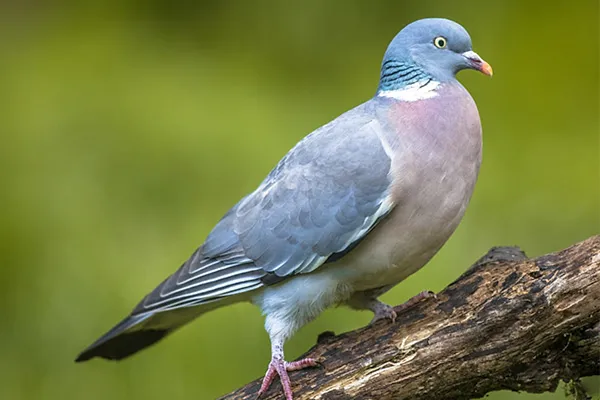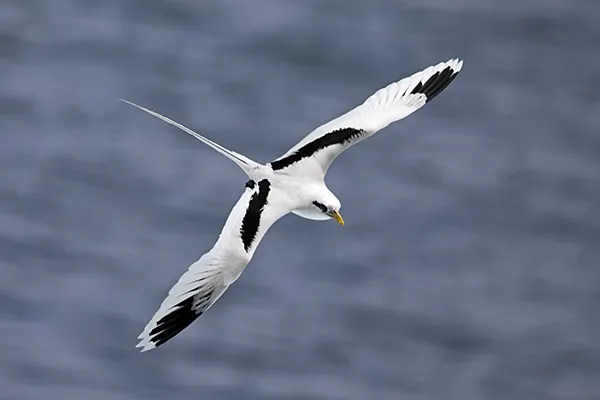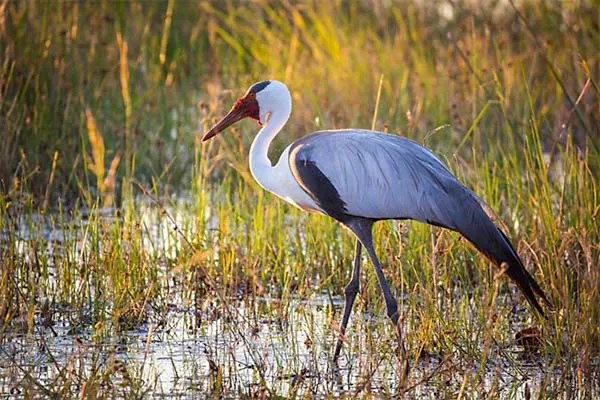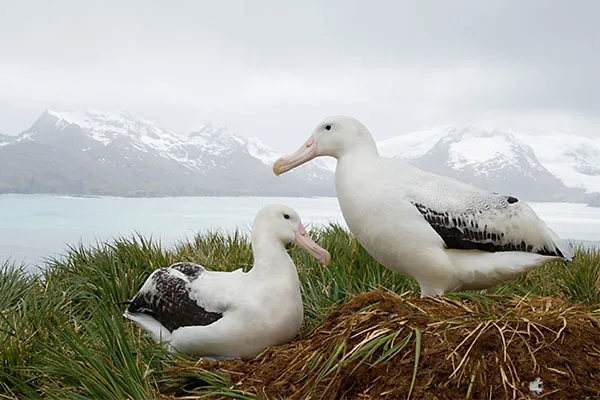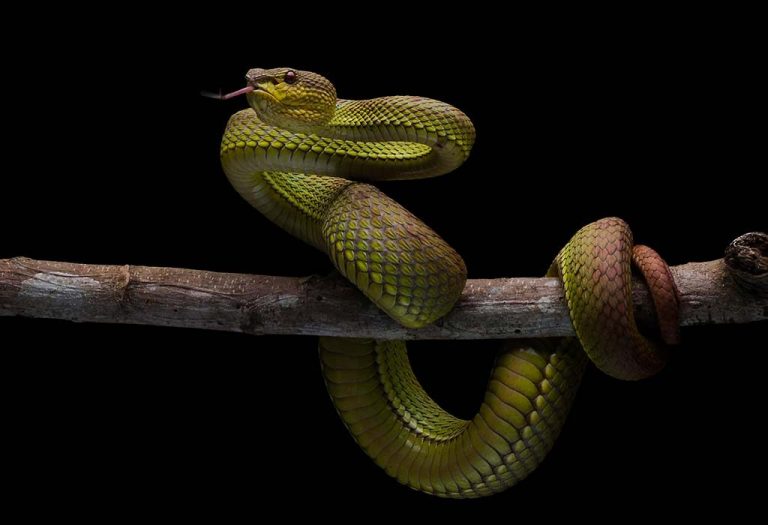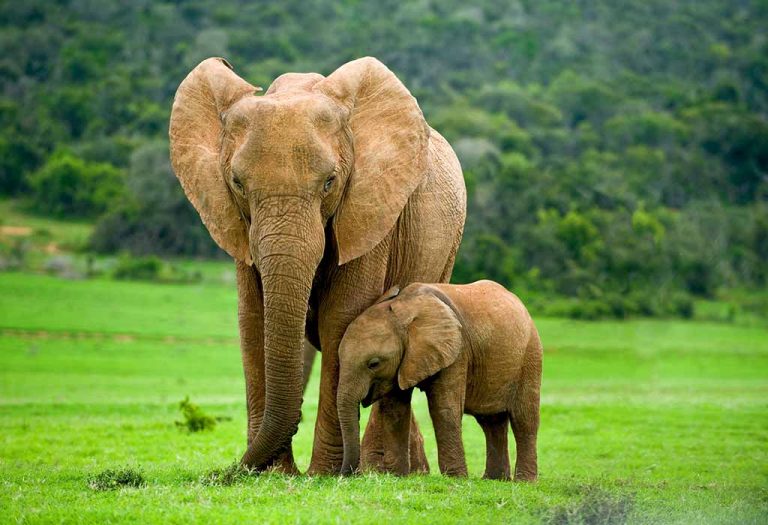List of Birds That Start With W
- List Of Common Birds That Start With W
- Other Birds Beginning With W
- FAQs
- Birds Names That Begin With (A to Z)
For many of us, the thrill of watching our feathery friends in the skies or perched on a tree branch begins early when we first learn to identify them by their names. Expanding your knowledge is always exciting whether you’re a seasoned birdwatcher, a curious parent, or an eager young learner. So, let’s dive into the world of bird names, starting with the letter ‘W.’ This list is crafted for preschoolers and kids, making it a delightful addition to their growing vocabulary. We hope your kids’ vocabulary flourishes with these captivating W-letter bird names for preschoolers and kids.
List Of Common Birds That Start With W
From the whimsical whistle of the Warbler to the waddling walk of the Woodcock, our feathery companions add a layer of wonder to our natural world. As we embark on this journey, you’ll meet various birds, beginning with the letter W, each unique in its melody and plumage. This exploration promises to deepen your appreciation for these magnificent creatures and the diverse ecosystems they live in. So, let’s look at enchanting bird names with ‘W.’
1. Wren
Scientific Name: Troglodytidae
Where It Is Found: Wrens are primarily found in the Americas, with only a few species occurring in Europe and Asia. They are most common in temperate regions.
Among the birds beginning with the letter W, the Wren holds a special place with its small, chubby body, often held upright as it busily hops through underbrush and low branches. Its size does not reflect its loud and melodious voice, a delightful contrast that usually surprises listeners. Covered primarily in brown feathers, there are some variations depending on the species, with some showcasing lighter undersides or distinctive barrings of darker shades. These birds are not particularly flashy in colour, but they make up for it with their vibrant personalities. They are known to be highly active, not staying in one place for too long, which makes spotting them a fun challenge for birdwatchers.
Interesting Facts:
- Wrens have a unique behaviour called ‘anting,’ where they rub ants on their feathers! The reason? It’s believed the ants’ acid helps with mite control.
- Despite their small size, wrens have one of the loudest songs per unit of body weight.
2. Waxwing
Scientific Name: Bombycillidae
Where It Is Found: Waxwings are inhabitants of the Northern Hemisphere, living in open wooded areas in North America and Eurasia.
The Waxwing is a treat for the eyes, especially for someone exploring bird names with ‘W.’ It boasts a sleek, polished look with a crest that sweeps backwards from its head. Its plumage is a soft blend of browns and greys, accented by brilliant red tips on some wing feathers, which look like sealing wax—hence its name. These friendly birds are often spotted in large, noisy groups in winter, feasting on tree berries. They exhibit a rare behaviour known as ‘irruption,’ where they migrate unpredictably depending on the food source availability.
Interesting Facts:
- Waxwings practice a charming trait called ‘courtship feeding,’ where males offer berries to females, strengthening their bond. Waxwings have been observed passing berries to one another, beak to beak, in a line until one decides to eat it.
- They can survive on a fruit-only diet for several months, a rare ability in the bird world.
- They can ferment in their stomachs if consumed in vast amounts, occasionally intoxicating the birds.
3. Woodpecker
Scientific Name: Picidae
Where It Is Found: Woodpeckers can be found worldwide, except for Australia, New Zealand, Madagascar, and the extreme polar regions.
Instantly recognisable by their unique pecking behaviour, woodpeckers are a favourite among birds that begin with the letter ‘W.’ With sharp beaks designed to drill into wood, they search for insects or establish nesting holes. They possess strong, stiff tail feathers acting as a prop when they cling vertically to trees. Their plumage varies greatly between species but often includes a black, white, red, and green blend. They have zygodactyl feet – two toes pointing forward and two backwards – which give them a firm grip, ideal for their tree-climbing lifestyle.
Interesting Facts:
- Woodpeckers can peck at a speed of up to 20 times per second!
- They have a special bone that acts as a shock absorber to prevent brain injuries during their vigorous pecking.
4. Warbler
Scientific Name: Sylviidae
Where It Is Found: Warblers inhabit various regions, with many species residing in North America, Europe, and Asia. They often prefer wooded areas.
Warblers are small, active songbirds known for their melodic tunes. Typically brightly coloured, their plumage ranges from yellows and greens to blues and greys. Due to their energetic nature and frequent movement, they can sometimes be challenging to spot. However, their distinctive songs often give away their presence. Warblers are vital in controlling insect populations, as they primarily feed on caterpillars and other small insects.
Interesting Facts:
- The migration journey of some warbler species can be over 2,500 miles.
- The Blackburnian Warbler nests as high as 80 feet off the ground, making it one of the tree canopy’s highest nesters.
5. Weaver
Scientific Name: Ploceidae
Where It Is Found: Weavers predominantly reside in sub-Saharan Africa, but some species can also be found in tropical Asia.
As the name suggests, the weaver is renowned for its incredible nest-building capabilities. They weave intricate nests, often hanging from tree branches like decorative ornaments. Their bright yellow or red plumage is a sight, making them stand out in their native habitats. Characterised by their conical bills and rounded heads, weavers often have a social nature, living in colonies and frequently communicating with loud calls.
Interesting Facts:
- The weaver’s nest is so tightly woven that it can often hold water.
- Male weavers are the primary architects of these nests, using them as a display to attract potential mates.
6. Waterfowl
Scientific Name: Anseriformes
Where It Is Found: Waterfowl are found globally in freshwater lakes, ponds, marshes, and coastal shores. They are especially abundant in wetlands.
Waterfowl is a general term for birds like ducks, geese, and swans. These birds are well adapted to aquatic life. They’re built for life on the water with webbed feet for efficient swimming and waterproof feathers. Their buoyant bodies and broad, flat beaks are perfect for dabbling and diving, and they are often seen tipping forward in the water to graze on underwater vegetation. Many species exhibit vibrant and intricate plumage patterns, especially during mating seasons, making them a favourite among birdwatchers and photographers.
Interesting Facts:
- The term ‘waterfowl’ is often used interchangeably with ‘wildfowl’ in the UK.
- Many waterfowl species practice migratory patterns, with some travelling thousands of miles between their breeding and wintering grounds.
7. Whip-poor-will
Scientific Name: Antrostomus vociferus
Where It Is Found: The Whip-poor-will can be found in North America’s Eastern and Central parts, favouring woodlands and open forests.
The Whip-poor-will, named for its continuous ‘whip-poor-will’ call during spring evenings, is a nocturnal bird known for its cryptic appearance. Its mottled grey and brown plumage blends seamlessly with leaf litter, making it challenging to spot during the daytime. With large eyes adapted for low light and a wide mouth, the Whip-poor-will primarily feeds on moths and other flying insects at night.
Interesting Facts:
- Unlike many birds, the Whip-poor-will’s song can be heard during moonlit nights, often for hours without a break.
- Their eggs are timed to hatch around the full moon, which ensures maximum light for the parents to hunt insects and feed their chicks.
8. Woodswallow
Scientific Name: Artamus
Where It Is Found: Woodswallows inhabit Australia, the islands of Southeast Asia, and parts of the Indian subcontinent.
Woodswallows are sleek, agile birds with a swallow-like appearance, although they aren’t closely related to true swallows. Their plumage can range from soft greys and blues to inky blacks, often with iridescent sheens. They have short, strong bills and are aerial feeders, capturing insects on the wing with impressive acrobatics. A unique behaviour observed among Woodswallows is their communal roosting. They huddle closely, often in large numbers, to share warmth during cooler temperatures.
Interesting Facts:
- Woodswallows are known to use their wings to ‘shade’ their chicks from direct sunlight, showcasing parental care.
- They possess a unique brush-tipped tongue, which aids in feeding on nectar from flowers, although insects remain their primary food source.
9. Wheatear
Scientific Name: Oenanthe
Where It Is Found: Wheatears are often found across Europe, Asia, Africa, and North America, usually in open and stony habitats.
The Wheatear is a small, elegant bird, recognised by its striking plumage featuring bright white underparts and contrasting dark uppers, often with patches of blue-grey or rust. The name ‘Wheatear’ is not related to wheat or ears but is derived from the Old English word for ‘white arse,’ referring to its white rump. These birds are ground dwellers, often seen hopping or running across open fields in search of insects.
Interesting Facts:
- Wheatears have one of the longest migratory journeys of any songbird, with some travelling from Arctic breeding grounds to winter in Africa.
- They are among the first migrants to arrive in their breeding areas in the spring, signalling the start of the new season for many bird enthusiasts.
10. White-eye
Scientific Name: Zosteropidae
Where It Is Found: White-eyes are predominantly found in Asia, the Indian Ocean, Australia, and the Pacific islands.
White-eyes are small, delicate birds with an unmistakable feature: a conspicuous white ring around their eyes. Their plumage is primarily green or olive-green, making them blend effortlessly into the lush environments they inhabit. They have slender bills and a sweet, melodic song, often filling tropical forests and gardens. Often seen in lively flocks, White-eyes are social birds, constantly on the move, flitting from one branch to another in search of insects and nectar.
Interesting Facts:
- White-eyes have an exceptional ability to colonise islands, leading to rapid speciation in isolated environments.
- Due to their nectar-feeding habits, they play a crucial role in plant pollination in many ecosystems.
11. Wood-Pigeon
Scientific Name: Columba palumbus
Where It Is Found: Wood pigeons are commonly found across Europe and Asia. They prefer woodlands, parks, gardens, and farmlands.
Considerably larger than city pigeons, the Wood Pigeon flaunts grey-blue plumage with a distinctive white patch on its neck. The wings exhibit a greenish and purplish sheen, especially noticeable when they catch sunlight. With a steady and rhythmic wingbeat, they are often seen flying across open spaces or perched prominently on trees or buildings. They feed primarily on seeds, grains, and crops, sometimes becoming a nuisance to farmers.
Interesting Facts:
- Wood pigeons can drink water without needing to tilt their heads back, a trait uncommon in many birds.
- Their cooing calls are familiar in many rural areas, marking the beginning and end of days during warmer months.
12. White-tailed Tropicbird
Scientific Name: Phaethon lepturus
Where It Is Found: White-tailed Tropicbirds are residents of the tropical oceans, breeding on islands in the Atlantic, Indian, and Pacific Oceans.
Elegant and graceful, the White-tailed Tropicbird is predominantly white with black markings on its wings and a black eyeline. Its distinguishing feature is the long white tail streamers, or ‘aerials.’ While they are oceanic birds, they are more often seen flying near coastlines than far out at sea. Their diet includes fish and squid, which they catch by performing plunge dives from notable heights.
Interesting Facts:
- The White-tailed Tropicbird’s aerial displays during the breeding season are mesmerising. They involve rapid circling, steep ascents, and sharp turns.
- Despite their affinity for the ocean, they are not great swimmers and spend most of their time airborne or perched.
13. Wattled Crane
Scientific Name: Bugeranus carunculatus
Where It Is Found: The Wattled Crane is found in the wetlands of sub-Saharan Africa, especially in regions from Zambia to South Africa.
The tallest crane species in Africa, the Wattled Crane stands out due to the white, fleshy wattles hanging from its throat. Its primary feathers are black, contrasting sharply with the rest of its grey and white body. Its long legs are unique, allowing it to wade through deep waters, searching for tubers, aquatic plants, and small vertebrates.
Interesting Facts:
- Wattled Cranes perform a spectacular, synchronised dancing ritual during courtship. This ritual includes leaping, bowing, and tossing plant materials into the air.
- They are the most vulnerable of Africa’s crane species, facing threats from habitat loss due to agriculture and human development.
14. Wandering Albatross
Scientific Name: Diomedea exulans
Where It Is Found: The Wandering Albatross is found across the Southern Ocean, particularly around the Antarctic region. They spend most of their life soaring over open waters.
Recognised by its impressive wingspan, which can exceed 11 feet, making it the largest of any living bird, the Wandering Albatross is a sight to behold. Their body is primarily white, with dark wingtips and a pink bill. Adapted to a life at sea, these birds can glide effortlessly over the ocean for hours or even days without flapping their wings, riding the air currents and conserving energy. Their diet mainly comprises squid, fish, and other sea creatures, which they snatch from the water’s surface.
Interesting Facts:
- The Wandering Albatross has a lifespan exceeding 60 years, making them one of the longest-living birds.
- They can cover vast distances during their foraging trips, sometimes travelling thousands of miles away from their nesting sites.
Other Birds Beginning With W
Birds are as diverse and fascinating as the cultures that admire them. Among this plethora of species, many birds start with the letter ‘W.’ We will explore more of these captivating avian creatures found worldwide.
- Wagtail
- Wallcreeper
- Waterhen
- Waterthrush
- Wattled Guan
- Wattled Jacana
- Wattled Starling
- Waxbill
- Weebill
- Whimbrel
- Whinchat
- Whipbird
- Whiskered Auklet
- Whiskered Tern
- White-crowned Sparrow
- White-eyed Vireo
- White-faced Ibis
- White-faced Plover
- White-fronted Bee-eater
- Whitehead
- White-naped Crane
- White-necked Jacobin
- White-throated Kingfisher
- White-winged Crossbill
- White-winged Dove
- White-winged Snowfinch
- Willow Ptarmigan
- Willow Warbler
- Wilson’s Phalarope
- Wilson’s Snipe
- Wilson’s Storm-petrel
- Wilson’s Warbler
- Wing-snapping Cisticola
- Winter Wren
- Wompoo Fruit Dove
- Wood Sandpiper
- Wood Stork
- Woodchat Shrike
- Woodcock
- Woodlark
- Woolly-necked Stork
- Worm-eating Warbler
- Wrentit
- Wryneck
- Wrybill
Bird enthusiasts, nature lovers, and curious minds alike can explore these names further, exploring the characteristics and habitats that make each of these ‘W’ birds unique.
FAQs
1. How many bird species have names that start with the letter ‘W?’
There are over a hundred bird species globally, and their names start with the letter ‘W,’ though the exact number might vary based on classification and regional differences.
2. Which ‘W’ bird has the largest wingspan?
The Wandering Albatross has the largest wingspan amongst any living bird, which can exceed 11 feet.
3. Are there any ‘W’ birds that are considered endangered?
Yes, several ‘W’ birds are considered endangered or vulnerable, including the Wattled Crane, which faces threats from habitat loss.
4. Which continents can you find ‘W’ birds?
Birds with names starting with the letter ‘W’ can be found on every continent, from the Wandering Albatross in the Antarctic to the Wood Warbler in Europe.
5. Are Warblers and Waterthrushes the same?
While both are songbirds, warblers encompass various species with varied appearances and habitats. Waterthrushes are a type of warbler but are distinct due to their affinity for waterside habitats.
In the intricate tapestry of nature, birds with names that start with the letter ‘W’ add unique patterns and colours. Their diversity, behaviours, and sheer beauty remind us of the wonders of the avian world and the importance of preserving these feathery marvels for generations to come.
Birds Names That Begin With (A to Z)
| A | B | C | D | E | F | G | H | I |
| J | K | L | M | N | O | P | Q | R |
| S | T | U | V | W | X | Y | Z |
Was This Article Helpful?
Parenting is a huge responsibility, for you as a caregiver, but also for us as a parenting content platform. We understand that and take our responsibility of creating credible content seriously. FirstCry Parenting articles are written and published only after extensive research using factually sound references to deliver quality content that is accurate, validated by experts, and completely reliable. To understand how we go about creating content that is credible, read our editorial policy here.






